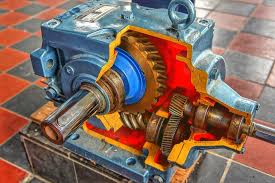Mobile:+86-311-808-126-83
Email:info@ydcastings.com
Design and Performance Analysis of a Sawtooth Impeller in Fluid Dynamics Applications
Understanding Sawtooth Impellers Design, Function, and Applications
When it comes to fluid dynamics and the efficient mixing of liquids, the design of an impeller plays a crucial role. Among various types of impellers, the sawtooth impeller stands out due to its unique shape and functionality. This article delves into the characteristics, advantages, and applications of sawtooth impellers, emphasizing their significance in industrial processes.
Design Characteristics
A sawtooth impeller is characterized by its sharp, triangular-shaped blades that resemble the teeth of a saw, thus the name. These blades are typically positioned at specific angles to enhance the flow of fluids. The design of sawtooth impellers is engineered to promote high shear rates and turbulent flow, which are essential for effective mixing.
The sawtooth shape allows for greater interaction between the fluid and the impeller, breaking down aggregates and ensuring that the mixture is homogeneous. This design not only maximizes the surface area available for mixing but also improves the efficiency of the impeller's operation. Depending on the application, sawtooth impellers can vary in size, blade number, and configuration, allowing for customization based on specific mixing requirements.
Advantages of Sawtooth Impellers
1. Enhanced Mixing Efficiency One of the most significant advantages of sawtooth impellers is their ability to achieve superior mixing in a shorter period. The unique blade shape and orientation facilitate rapid fluid circulation, reducing the time required for processes like blending, emulsification, and dispersion.
2. High Shear Rates Sawtooth impellers generate high shear forces, making them ideal for processing viscous fluids or materials that require intense mixing. This characteristic is particularly beneficial in industries such as food and beverage, pharmaceuticals, and chemical manufacturing.
3. Versatility These impellers are suitable for a broad range of applications, from low-viscosity to highly viscous materials. Their adaptability makes them a valuable asset in various industrial processes, including homogenizing cream in dairy products or mixing paints and coatings.
sawtooth impeller

4. Reduced Energy Consumption The design of sawtooth impellers leads to efficient mixing with less energy input. Their effective fluid dynamics mean that the same mixing outcomes can often be achieved at lower rpm (revolutions per minute) compared to traditional impellers, leading to cost savings in energy consumption over time.
5. Improved Material Transfer The sawtooth configuration promotes better axial and radial flow patterns, aiding in the efficient transfer of materials throughout the mixing vessel. This is particularly important in large-scale operations where uniformity is critical.
Applications
The versatility of sawtooth impellers allows them to be employed in a multitude of industries
- Chemical Processing In chemical reactors, sawtooth impellers are commonly used for mixing reactants, ensuring proper interaction and reaction efficiency. - Food Industry These impellers are instrumental in producing sauces, dressings, and other emulsified products by ensuring homogeneity and preventing separation.
- Pharmaceuticals Their capability to handle viscous solutions makes sawtooth impellers ideal for formulating creams, gels, and liquid medications.
- Wastewater Treatment In environmental engineering, sawtooth impellers are used in bioreactors to enhance mixing and aeration, promoting the growth of microorganisms essential for waste treatment.
Conclusion
In conclusion, sawtooth impellers represent a remarkable advancement in mixing technology, featuring an innovative design that facilitates efficient and effective mixing across various industries. Their advantages, including enhanced mixing efficiency, high shear rates, versatility, reduced energy consumption, and improved material transfer, make them an indispensable component in many industrial applications. As industries continue to evolve and demand more efficient processes, sawtooth impellers will undoubtedly play a key role in meeting these challenges, driving innovation in fluid mixing techniques.
-
Why Should You Invest in Superior Pump Castings for Your Equipment?NewsJun.09,2025
-
Unlock Performance Potential with Stainless Impellers and Aluminum End CapsNewsJun.09,2025
-
Revolutionize Your Machinery with Superior Cast Iron and Aluminum ComponentsNewsJun.09,2025
-
Revolutionize Fluid Dynamics with Premium Pump ComponentsNewsJun.09,2025
-
Optimizing Industrial Systems with Essential Valve ComponentsNewsJun.09,2025
-
Elevate Grid Efficiency with High-Precision Power CastingsNewsJun.09,2025











